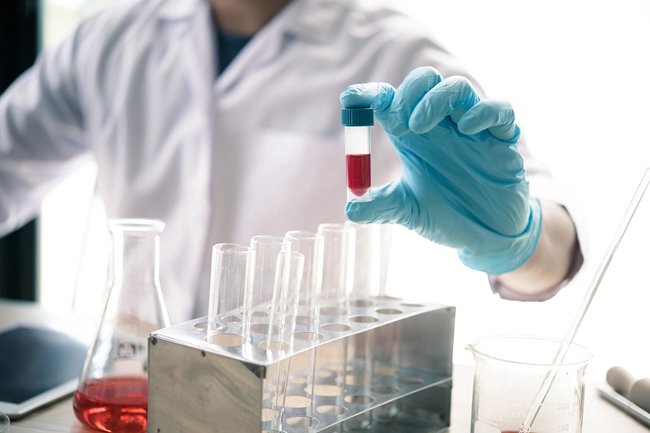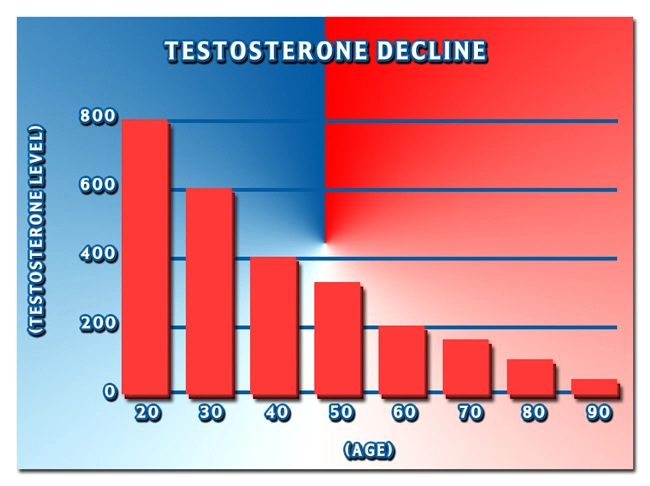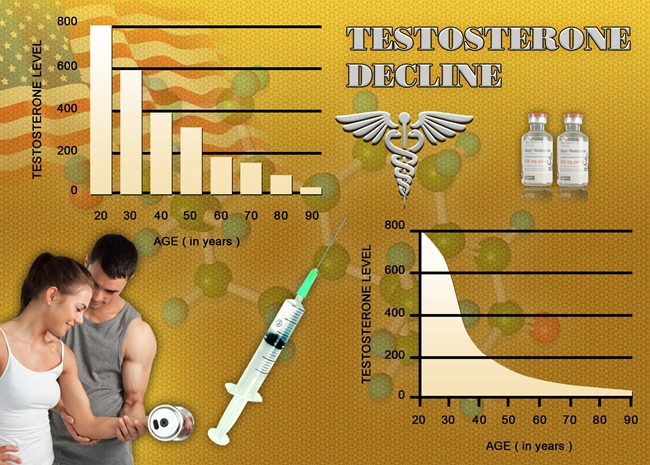
Introduction to Natesto
Natesto is a testosterone nasal gel approved by the FDA for the treatment of low testosterone levels in men, a condition known as hypogonadism. As a topical treatment, Natesto offers a convenient and non-invasive method for hormone replacement therapy. However, like all medications, it comes with potential risks that users must be aware of, including its impact on blood clotting.
Understanding Blood Clotting and Testosterone
Blood clotting, or coagulation, is a critical bodily process that prevents excessive bleeding after injury. However, abnormal clotting can lead to serious conditions such as deep vein thrombosis (DVT) or pulmonary embolism (PE). Testosterone, particularly when used in hormone therapy, has been linked to an increased risk of these clotting events. The exact mechanism by which testosterone may affect blood clotting is not fully understood, but it is believed to involve changes in the levels of clotting factors and platelets.
Risks Associated with Natesto
While Natesto is generally considered safe for most men, there is a potential risk of increased blood clotting. Studies have shown that testosterone therapy can lead to changes in the blood's clotting profile, which could predispose some individuals to clot formation. It is important for American males considering or currently using Natesto to be aware of this risk, especially if they have other predisposing factors such as a history of clotting disorders, obesity, or prolonged immobility.
Precautions and Monitoring
Before starting Natesto, men should undergo a thorough medical evaluation to assess their risk of blood clotting. This evaluation should include a detailed medical history and possibly blood tests to check for clotting factors. Men with a higher risk of clotting may need to consider alternative treatments or be closely monitored while using Natesto.
Regular follow-up appointments are crucial for monitoring the effects of Natesto on blood clotting. Healthcare providers may recommend periodic blood tests to monitor clotting factors and other relevant markers. Any signs of clotting, such as swelling, pain, or redness in the legs, or sudden shortness of breath, should be reported immediately to a healthcare professional.
Lifestyle and Natesto
American males using Natesto can take several steps to minimize their risk of blood clotting. Maintaining a healthy lifestyle, including regular exercise and a balanced diet, can help reduce the risk of clotting. Staying hydrated and avoiding prolonged periods of immobility are also important. For men who travel frequently or have desk jobs, incorporating movement breaks can be beneficial.
Conclusion: Balancing Benefits and Risks
Natesto offers a valuable treatment option for men with low testosterone levels, but it is essential to balance its benefits with the potential risks, including increased blood clotting. American males should work closely with their healthcare providers to monitor their health and make informed decisions about their treatment. By understanding the risks and taking appropriate precautions, men can safely manage their testosterone levels and maintain their overall health.
In summary, while Natesto can be an effective treatment for hypogonadism, it is crucial for users to be aware of the potential risks related to blood clotting. With proper medical guidance and lifestyle adjustments, American males can mitigate these risks and enjoy the benefits of testosterone therapy.
Contact Us Today For A Free Consultation
Dear Patient,
Once you have completing the above contact form, for security purposes and confirmation, please confirm your information by calling us.
Please call now: 1-800-380-5339.
Welcoming You To Our Clinic, Professor Tom Henderson.

- Natesto: Revolutionizing Fatigue Management in American Men with Hypogonadism [Last Updated On: March 17th, 2025] [Originally Added On: March 17th, 2025]
- Natesto: Revolutionizing Testosterone Therapy with Nasal Gel for American Men [Last Updated On: March 17th, 2025] [Originally Added On: March 17th, 2025]
- Natesto: Enhancing Cognitive Function in American Males via Intranasal Testosterone Delivery [Last Updated On: March 18th, 2025] [Originally Added On: March 18th, 2025]
- Comparing Natesto Nasal Gel to Traditional Testosterone Gels for TRT in American Men [Last Updated On: March 18th, 2025] [Originally Added On: March 18th, 2025]
- Natesto: Effective Testosterone Therapy for Aging American Men [Last Updated On: March 19th, 2025] [Originally Added On: March 19th, 2025]
- Natesto: A Nasal Gel Revolutionizing Testosterone Therapy for American Men [Last Updated On: March 20th, 2025] [Originally Added On: March 20th, 2025]
- Natesto: Nasal Testosterone Gel's Impact on Skin Health for American Men [Last Updated On: March 21st, 2025] [Originally Added On: March 21st, 2025]
- Natesto Testosterone Gel Enhances Sleep Quality in American Men: Clinical Insights [Last Updated On: March 21st, 2025] [Originally Added On: March 21st, 2025]
- Natesto: A Novel Nasal Gel for Managing Chronic Fatigue in American Men [Last Updated On: March 21st, 2025] [Originally Added On: March 21st, 2025]
- Natesto: Enhancing Weight Management in Men with Testosterone Deficiency [Last Updated On: March 22nd, 2025] [Originally Added On: March 22nd, 2025]
- Natesto: Enhancing Athletic Performance in American Male Athletes [Last Updated On: March 22nd, 2025] [Originally Added On: March 22nd, 2025]
- Natesto: FDA-Approved Nasal Gel for Hypogonadism Treatment and Monitoring Guidelines [Last Updated On: March 22nd, 2025] [Originally Added On: March 22nd, 2025]
- Natesto: Testosterone Therapy's Impact on Cardiovascular Health in American Males [Last Updated On: March 22nd, 2025] [Originally Added On: March 22nd, 2025]
- Natesto: A Game-Changing Nasal Gel for Testosterone Replacement in American Males [Last Updated On: March 23rd, 2025] [Originally Added On: March 23rd, 2025]
- Natesto: Tailoring Dosage for Optimal Testosterone Therapy in American Males [Last Updated On: March 23rd, 2025] [Originally Added On: March 23rd, 2025]
- Natesto: Enhancing Men's Health with Nasal Testosterone Therapy [Last Updated On: March 23rd, 2025] [Originally Added On: March 23rd, 2025]
- Natesto: Enhancing Testosterone with Diet and Exercise for American Men [Last Updated On: March 23rd, 2025] [Originally Added On: March 23rd, 2025]
- Natesto: Nasal Testosterone Gel for Hypogonadism - Benefits, Risks, and Considerations [Last Updated On: March 23rd, 2025] [Originally Added On: March 23rd, 2025]
- Natesto: Safe Testosterone Therapy for Hypogonadism and Prostate Health in American Men [Last Updated On: March 24th, 2025] [Originally Added On: March 24th, 2025]
- Natesto: Revolutionizing Testosterone Therapy with Nasal Gel for Hypogonadism in Men [Last Updated On: March 24th, 2025] [Originally Added On: March 24th, 2025]
- Natesto: Enhancing Mental Clarity and Cognitive Function in American Men [Last Updated On: March 24th, 2025] [Originally Added On: March 24th, 2025]
- Natesto: Revolutionary Nasal Gel for Testosterone Replacement in American Men [Last Updated On: March 24th, 2025] [Originally Added On: March 24th, 2025]
- Natesto: Enhancing Testosterone and Gut Health in American Males [Last Updated On: March 24th, 2025] [Originally Added On: March 24th, 2025]
- Natesto: Enhancing Male Libido and Sexual Health with Nasal Testosterone Therapy [Last Updated On: March 25th, 2025] [Originally Added On: March 25th, 2025]
- Natesto: Innovative Nasal Gel for Testosterone Deficiency in American Men [Last Updated On: March 25th, 2025] [Originally Added On: March 25th, 2025]
- Natesto: Innovative Nasal Gel for Testosterone Replacement in American Men [Last Updated On: March 25th, 2025] [Originally Added On: March 25th, 2025]
- Natesto: Enhancing Male Confidence and Self-Esteem Through Testosterone Therapy [Last Updated On: March 25th, 2025] [Originally Added On: March 25th, 2025]
- Natesto: Testosterone Therapy and Its Impact on Male Pattern Baldness [Last Updated On: March 25th, 2025] [Originally Added On: March 25th, 2025]
- Natesto: Innovative Nasal Gel for Testosterone Replacement in American Men [Last Updated On: March 25th, 2025] [Originally Added On: March 25th, 2025]
- Natesto: Enhancing Immune Health in American Men Through Testosterone Therapy [Last Updated On: March 25th, 2025] [Originally Added On: March 25th, 2025]
- Natesto: Effective Intranasal Testosterone Therapy for Hypogonadism in American Men [Last Updated On: March 25th, 2025] [Originally Added On: March 25th, 2025]
- Natesto: Impact on Blood Sugar Levels in Diabetic American Men [Last Updated On: March 25th, 2025] [Originally Added On: March 25th, 2025]
- Natesto: A New Hope in Testosterone Therapy for American Men [Last Updated On: March 25th, 2025] [Originally Added On: March 25th, 2025]
- Natesto: Enhancing Stress Resilience in American Men with Testosterone Therapy [Last Updated On: March 25th, 2025] [Originally Added On: March 25th, 2025]
- Natesto: Nasal Testosterone Gel for Hypogonadism, Addressing Skin Sensitivity in American Men [Last Updated On: March 26th, 2025] [Originally Added On: March 26th, 2025]
- Natesto: Enhancing Physical Strength and Vitality in American Males with Hypogonadism [Last Updated On: March 26th, 2025] [Originally Added On: March 26th, 2025]
- Natesto: Enhancing Emotional Well-being in American Males through Testosterone Therapy [Last Updated On: March 26th, 2025] [Originally Added On: March 26th, 2025]
- Natesto: Testosterone Gel's Impact on Eye Health in American Men [Last Updated On: March 26th, 2025] [Originally Added On: March 26th, 2025]
- Natesto: A Convenient Nasal Gel for Testosterone Deficiency in American Men [Last Updated On: March 26th, 2025] [Originally Added On: March 26th, 2025]
- Natesto: Navigating Insurance, Affordability, and Healthcare Access for American Men [Last Updated On: March 26th, 2025] [Originally Added On: March 26th, 2025]
- Natesto: Revolutionizing Testosterone Therapy for American Men's Vitality [Last Updated On: March 26th, 2025] [Originally Added On: March 26th, 2025]
- Natesto: Innovative Nasal Gel for Testosterone Deficiency in American Men [Last Updated On: March 27th, 2025] [Originally Added On: March 27th, 2025]
- Natesto: Revolutionizing Testosterone Therapy for Aging American Males [Last Updated On: March 27th, 2025] [Originally Added On: March 27th, 2025]
- Natesto: Enhancing Joint Health and Mobility in American Men [Last Updated On: March 27th, 2025] [Originally Added On: March 27th, 2025]
- Natesto: Innovative Nasal Gel for Testosterone Deficiency in American Men [Last Updated On: March 28th, 2025] [Originally Added On: March 28th, 2025]
- Natesto: Revolutionizing Testosterone Therapy for Enhanced Male Vitality and Performance [Last Updated On: March 28th, 2025] [Originally Added On: March 28th, 2025]
- Natesto: Revolutionizing TRT with Nasal Gel for Hypogonadism in American Men [Last Updated On: March 28th, 2025] [Originally Added On: March 28th, 2025]
- Natesto and Liver Health: Monitoring and Management for American Men [Last Updated On: March 28th, 2025] [Originally Added On: March 28th, 2025]
- Natesto: Impact on Kidney Health and Monitoring Guidelines for American Men [Last Updated On: March 29th, 2025] [Originally Added On: March 29th, 2025]
- Natesto Nasal Gel: Impacts on Sleep Apnea in American Males [Last Updated On: March 30th, 2025] [Originally Added On: March 30th, 2025]
- Natesto: Safe Testosterone Nasal Gel for Hypogonadism in American Men [Last Updated On: March 31st, 2025] [Originally Added On: March 31st, 2025]
- Natesto: Managing Side Effects of Nasal Testosterone Therapy in Adult Men [Last Updated On: March 31st, 2025] [Originally Added On: March 31st, 2025]
- Natesto: Nasal Testosterone Gel for Hypogonadism and Allergic Reaction Risks [Last Updated On: April 2nd, 2025] [Originally Added On: April 2nd, 2025]
- Natesto's Impact on Dental Health: Insights and Recommendations for American Men [Last Updated On: April 3rd, 2025] [Originally Added On: April 3rd, 2025]
- Natesto: Enhancing Recovery and Healing in American Men with Testosterone Nasal Gel [Last Updated On: April 4th, 2025] [Originally Added On: April 4th, 2025]
- Natesto: Managing Testosterone Deficiency and Monitoring Blood Pressure in American Men [Last Updated On: April 5th, 2025] [Originally Added On: April 5th, 2025]
- Natesto: Enhancing Mental Health in American Men with Low Testosterone [Last Updated On: April 6th, 2025] [Originally Added On: April 6th, 2025]
- Natesto's Impact on Cholesterol Levels in American Males: A Comprehensive Overview [Last Updated On: April 7th, 2025] [Originally Added On: April 7th, 2025]
- Natesto: Effective Intranasal Testosterone Therapy for American Men with Hypogonadism [Last Updated On: April 7th, 2025] [Originally Added On: April 7th, 2025]
- Natesto: Enhancing Endurance and Stamina in American Men with Low Testosterone [Last Updated On: April 9th, 2025] [Originally Added On: April 9th, 2025]
- Natesto: Nasal Testosterone Gel for Male Hypogonadism and Digestive Health Benefits [Last Updated On: April 10th, 2025] [Originally Added On: April 10th, 2025]
- Natesto: Testosterone Therapy's Impact on Auditory Health in American Men [Last Updated On: April 10th, 2025] [Originally Added On: April 10th, 2025]
- Optimizing Natesto Dosage and Timing for American Males: A Comprehensive Guide [Last Updated On: April 11th, 2025] [Originally Added On: April 11th, 2025]
- Natesto: Testosterone Gel's Impact on Vision Health in American Males [Last Updated On: April 12th, 2025] [Originally Added On: April 12th, 2025]
- Natesto: FDA-Approved Nasal Gel for Hypogonadism in Men - Benefits and Considerations [Last Updated On: April 13th, 2025] [Originally Added On: April 13th, 2025]
- Natesto: Effects on Thyroid Function and Monitoring Guidelines for American Men [Last Updated On: April 13th, 2025] [Originally Added On: April 13th, 2025]
- Natesto: Enhancing Immune Response in American Males Through Testosterone Therapy [Last Updated On: April 13th, 2025] [Originally Added On: April 13th, 2025]
- Natesto: Nasal Testosterone Gel for Hypogonadism Treatment and Its Benefits [Last Updated On: April 15th, 2025] [Originally Added On: April 15th, 2025]
- Natesto: Enhancing Mood and Emotional Stability in American Males with Low Testosterone [Last Updated On: April 19th, 2025] [Originally Added On: April 19th, 2025]
- Natesto: Enhancing Skin Health and Combating Aging in American Men [Last Updated On: April 19th, 2025] [Originally Added On: April 19th, 2025]
- Natesto: Enhancing Cognitive Health in Aging American Men [Last Updated On: April 19th, 2025] [Originally Added On: April 19th, 2025]









